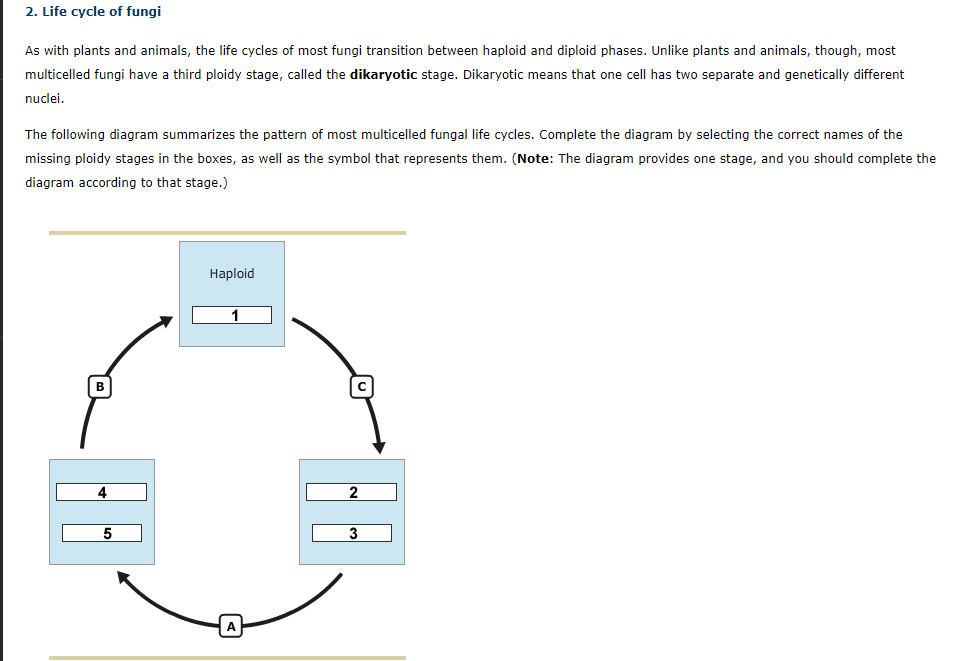2. Life cycle of fungi As with plants and animals, the life cycles of most fungi transition between haploid and diploid phases. Unlike plants and animals, though, most multicelled fungi have a third ploidy stage, called the dikaryotic stage. Dikaryotic means that one cell has two separate and genetically different nuclei. The following diagram summarizes the pattern of most multicelled fungal life cycles. Complete the diagram by selecting the correct names of the missing ploidy stages in the boxes, as well as the symbol that represents them. (Note: The diagram provides one stage, and you should complete the diagram according to that stage.) Нaploid 2
Structure and Composition of Cell Membrane
Despite differences in structure and function, all living cells in multicellular organisms are surrounded by a cell membrane. Just like the outer layer of the skin separates the body from its environment similarly, the cell membrane, also known as 'plasma membrane,' separates the inner content from its exterior environment.
Cell Membrane
The cell membrane is known by different names like plasma membrane or cytoplasmic membrane, or biological membrane. The term "cell membrane" was first introduced by C. Nageli and C. Cramer in the year 1855. Later on, in 1931, the term "plasmalemma" for cell membrane was given by J. Plowe. The cell membrane separates the cell's internal environment from the extracellular space. This separation allows the protection of cells from their environment.
Prokaryotes vs Eukaryotes
The cell is defined as the basic structural and functional unit of life. The cell membrane bounds it. It is capable of independent existence.
Options for 1 & 3 & 5
-2n+2n
-n
-n+n
-2n
options for 2 & 4
-haploid
-dipoid
-dikaryotic
options for bottom chart are A, B, C


Trending now
This is a popular solution!
Step by step
Solved in 3 steps with 1 images








